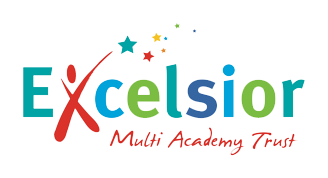How we Assess Children
How we assess children at Turves Green Primary School
What is assessment and why do we assess children?
Assessment is the way in which we:
- Find out what the children know
- Find out where the gaps are in their learning and then address these gaps
- Track the children’s progress from their starting points
- Match where the children are to their Age Related Expectations
How do we assess children?
We assess children in lots of different ways.
On a day-to-day basis assessment is used
- During lessons through observation, questioning and working alongside the children so that the information can support and extend the children’s learning
- To involve children through self and peer assessment against targets that they have been set
- At the end of the lesson to see what has been learnt and identify what the next-steps are for the future lessons
On-going
We use a system called ‘o’ track for Reading, Writing and Mathematics. It uses the National Curriculum Programmes of Study broken down into smaller steps. We record what the children have learnt on the these steps showing what the next stage in their learning needs to be.
| O Track Children are assessed in the following areas: | ||||
| Reading | Writing | Mathematics | ||
|
Decoding Comprehension Enjoyment of Reading |
Composition Transcription Grammar, Punctuation and Spelling Handwriting |
Number – place value Number – addition, subtraction, multiplication and division Algebra (Y6 only) Fractions Geometry Position and Direction Measurement Statistics Ratio and proportion |
||
Standardised Tests
Standardised Tests are used at the beginning of the Autumn term and end of Summer term for reading and mathematics. These give a standardised score and a reading or mathematics age. These allow us to see where a child is in relation to Age Related Expectations and to measure the progress they have made.
Half-termly
Using all the information from their day-to-day assessment and ‘o’ track information, teachers analyse the data they have collected.
Pupil Progress Meetings are held with Senior Leaders in school.
Pupil Progress Meetings
The purpose of these meetings is to:
- Discuss the progress of the children in the class and the different groups in the class, for example, boys and girls, children with Special Educational Needs and the most able
- Identify any children who may not be on track to make their expected progress for that point in the year
- Identify any areas of reading, writing and maths children are having difficulty with
- Discuss the next steps in learning
- Plan any additional support or interventions that may be needed
- Review the progress of children that may have been previously identified
- Make sure the assessments are accurate
Annually
Teachers use all of the assessment information from the whole year to come to a final judgement which is shared as part of the annual report.
|
Working at greater depth Skills, knowledge and understanding can be applied in a range of contexts independently for a range of purposes. Learning can be explained in depth. |
|
Working at the Expected Level Children are secure in their knowledge. Skills, knowledge and understanding are consistent and independently used, with evidence over a period of time showing retention. |
|
Working towards the Expected Level Children who are below the expectations for the year group and are achieving in the year below |
|
SEND Children who are working well below the end of year expectations. Children will have an ITP and have targeted support. |
Are the children tested in school as part of the way we assess?
Teachers will often carry out short tests at the end of a unit of work to see what the children can do independently. More formal tests which are standardised against results nationally are also used for reading and mathematics in Key Stage Two.
There are also national tests and assessments:
- On entry to school in Reception a Baseline assessment is carried out. The teacher works alongside the children on a range of activities to see what they can do when they first start school.
- At the end of Reception a range of activities are used as well as on-going assessment records to see if children have reached the Early Learning Goals, are exceeding them or working towards them. This is shared as part of the report to parents at the end of the year.
- In Year One the children take part in a Phonics Check which is carried out one-to-one with the teacher and assesses the children’s phonic ability. Those who do not meet the standard are given support and then re-assessed in Year 2 and again in Year 3 if needed. The results of this assessment are reported to parents in the annual report to parents.
- Year Two The teachers use a range of small group tests and their own assessment records to give the children a Teacher Assessed outcome as to whether they are at Age Related Expectations. These assessments are for Reading, Writing, Mathematics and Grammar, Punctuation and Spelling
- Year Six SATs Alongside the teacher assessment in Reading, Writing, Mathematics and Grammar, Punctuation and Spelling, the children sit a test which is marked externally and not by the teachers in school. These results are included in the annual report to parents
Are parents involved in assessing children?
In Reception, parents are invited into school to look at and comment on observations of the children. The child will come home with a sticker or note to let parents know when an observation has taken place.
Other ways in which parent views can be shared are through:
- Parents’ Evenings
- Reading journals
- Homework
- Through the annual report to parents
- Informal conversations with the class teachers at the end of the school day

